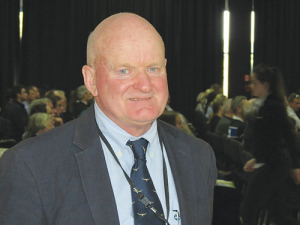High praise for the help DairyNZ provides to its levy payers.
It came at the annual Grasslands Association conference in Whangaui where a leading dairy farmer in the district, David Pearce, sang the praises of DairyNZ to 300 attendees.
He says DairyNZ has a complete package of unbiased advice for its dairy farmers, and he notes that this service resembles what the former Ministry of Agriculture did in the 1980s before the politicians dismembered it.
“The government of the day did agriculture a huge disservice when it broke up the department. When this happened their advisors largely went out and worked as independent consultants and took the ethos of the department with them.
“Now they are retiring and those of us who are sheep and beef farmers are bereft of good independent advice,” he says.
Pearce says that of the levy-based farmer organisations, only DairyNZ has tried to replace what MAF was. He calculates that for every cow on his farm he pays about $13.70 to DairyNZ via its levy, in return getting back real value for money.
“When I was interested in finding out about once-a-day dairy farming there was a wonderful set of discussion groups on OAD.
“If something takes your interest and you want information, DairyNZ is likely to have it and it’s accessible on their website. Research is valuable and it’s a great credit to the dairy industry.... Sometimes we farmers take it for granted but the value is huge,” he says.
The lack of independent advice since MAF’s demise is a problem, Pearce says. He recalls a fertiliser rep trying to persuade him not to buy a cheaper product.
Farmers should analyse the advice they get and work out what might be missing, he says. They should note who is sponsoring an event and be aware that any advice may be leading to a commercial opportunity for such a sponsor.
Pearce notes a lack of funding for the science of grazing management. Much of the research into this is being done on good quality land on research farms, whereas he believes it should be done on second-class land where the biggest gains could be made.
“The amount of research done on second-class land is pitiful,” he says.
He adds that pasture management research is a long term project.


















